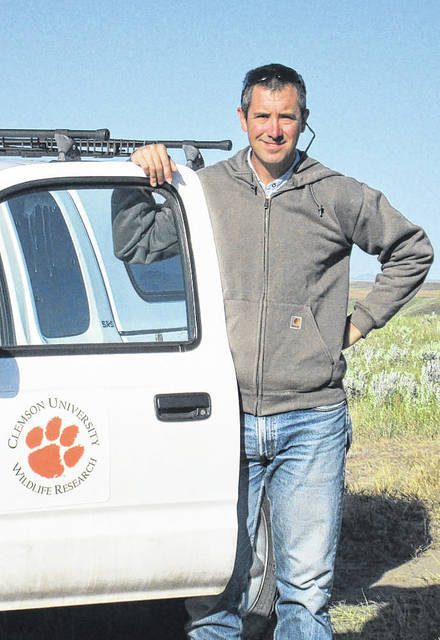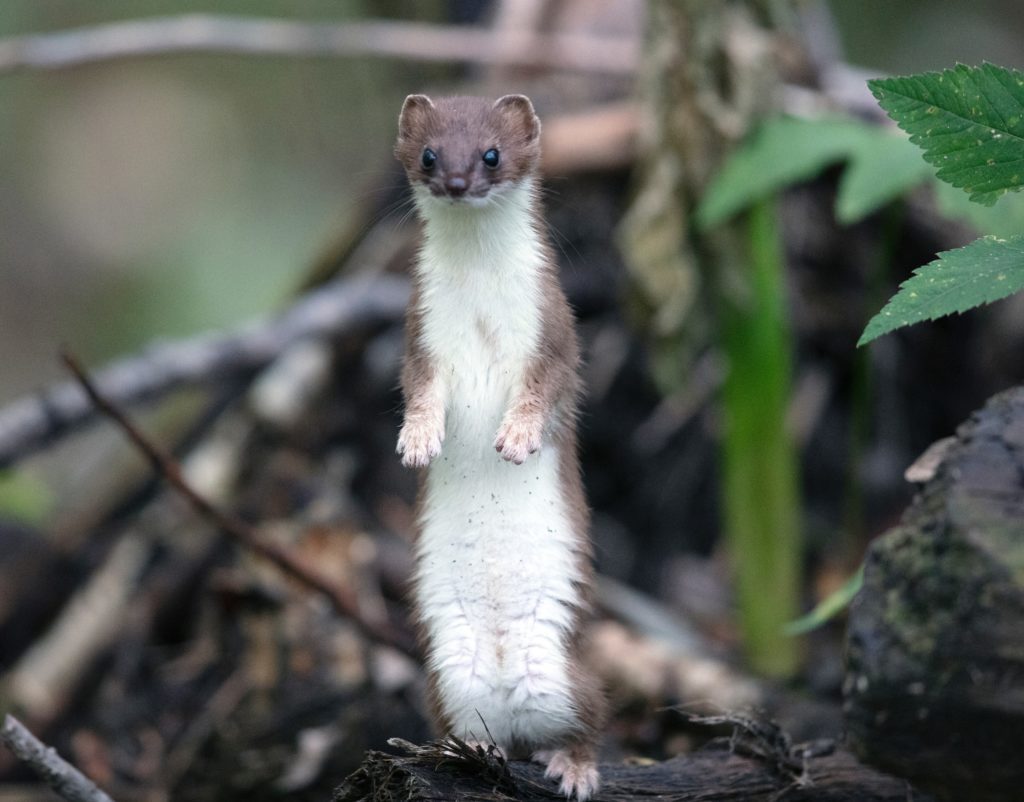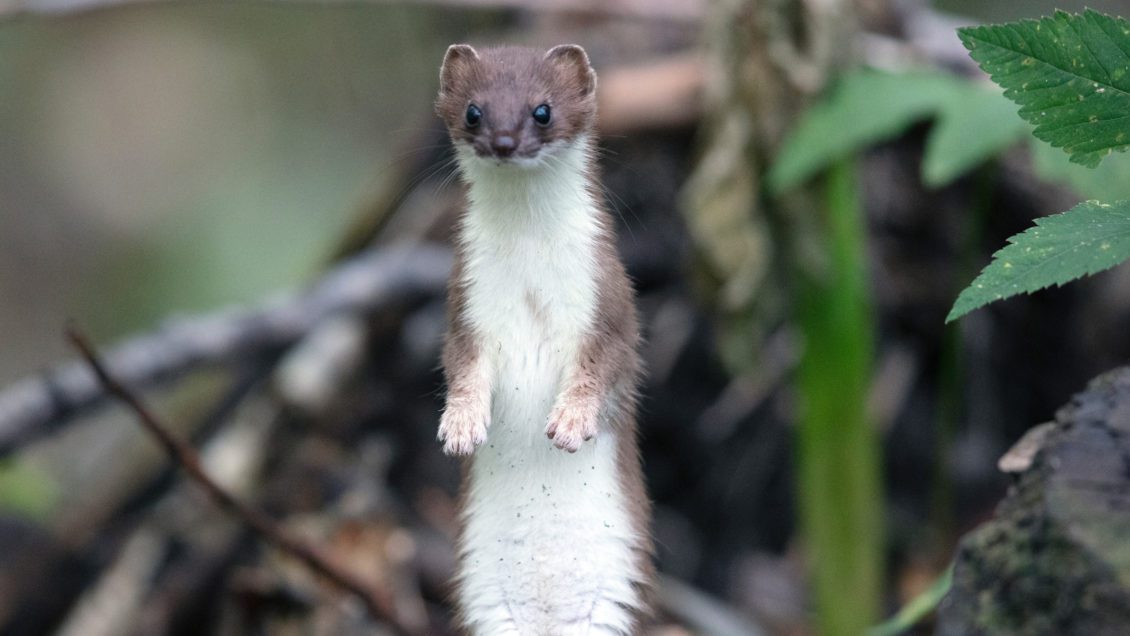Few animals have fallen from grace more rapidly than the weasel.
The miniscule mammals have gone from being so revered they were featured in the paintings of Renaissance artist Leonardo DaVinci to being something you might call someone when you want to start a fistfight.
Now, three once-common species of weasels are rapidly fading from the continent, according to a study led by Clemson University wildlife ecologist David Jachowski.
The findings, published July 21 in the scientific journal PLOS ONE and co-authored by Jachowski, an associate professor in Clemson’s Department of Forestry and Environmental Conservation, along with researchers from N.C. State and New Mexico State universities, echo recent calls for further investigations into the conservation needs of small carnivores globally.
“We often focus on big animals — we go to Yellowstone to study wolves and we talk about coyotes invading South Carolina — but we don’t really focus on the smaller carnivores and smaller mammals that exist in our states, our country or even the entire continent of North America, which is the scale of this research,” Jachowski said.
Jachowski said his co-authors on the paper have done similar analyses for other small carnivores and seen such declining trends, which led to the idea of looking at some of the common continental carnivores that are oft overlooked by many due to their small stature.

“Unless you maybe have chickens and you’re worried about a weasel eating your chickens, you probably don’t think about these species very often,” he said. “Even the state agency biologists who are charged with tracking these animals really don’t have a good grasp on what is going on. So, as scientists, we said, ‘Well, let’s pull together the best data possible to see if what’s happening to some other small carnivores around the globe is happening to weasels.’”
Turns out, the study showed a significant decline in the weasel population over the past century — with weasel reporting statistics, harvesting numbers and, for all intents and purposes, every type of monitoring data available indicating the animals are increasingly rare in North America, particularly the American Southeast.
The research team observed 87–94% declines in weasel harvest across the continent over the past 60 years. And while declining trapper numbers and shifts in trapping practices are likely partially to blame for the reduction, even after accounting for trapper effort and pelt price, a significant decline in weasel harvest for 15 of 22 evaluated states and provinces was detected.
“There used to be a lot more fur trapping of weasels in the United States than there is now, although there still is a market for them,” said study co-author Roland Kays, research professor of forestry and environmental resources at N.C. State and head of the N.C. Museum of Natural Sciences’ Biodiversity Lab. “Trappers were getting a lot of weasels — whether by accident or on purpose. Historically, they’ve been trapped more frequently in northern areas. In North Carolina, we’ve seen less trapping than we have in the past. There are very few weasels caught.”
The research team analyzed a century of historical datasets to track weasel population trends in the U.S. and Canada, including historical harvests for pelts, data from museum collections, observations reported on the popular iNaturalist crowdsourcing platform and results of a recent nationwide trail camera survey conducted by more than 700 researchers in 2019.
The study showed that while relatively common before 2000, there has been a dramatic decline in records of long-tailed weasels recently in some parts of its range — specifically the Southern, Central and Great Lakes regions — and the extent of these declines approaches 75-95% for all three species.
Likewise, the camera trap survey across all 50 U.S. states detected weasels at 14 sites, but only above 40 degrees latitude — a circle of latitude that passes through West Virginia and New Jersey among Atlantic coastal states.
“The decline is striking in some regions. There are areas where weasels were once common but seem to have become rare or even absent,” said Matthew Gompper, professor and head of the Department of Fish, Wildlife and Conservation Ecology at New Mexico State.
The study centered on the status of three weasel species — least weasels, long-tailed weasels and ermine — including one holding the distinction of being the smallest carnivoran species.
“While the polar bear is the largest carnivore in the world, a type of weasel known as the least weasel is the smallest,” Kays said. “They’re important predators of mice and rodents. But now it seems like no one is seeing weasels anymore. We see them very rarely on our camera traps in North Carolina. We were concerned they were declining.”
Weasels are ferocious carnivores with a fast metabolism and, unlike bears or coyotes, only eat meat — typically rodents.

“We don’t really know what impact their loss could be having on the release of rodents from their predation, but it could be substantial in some areas,” Jachowski said. “Perhaps more importantly, because they are such specialized carnivores, their decline could be a valuable indicator of declining populations of native rodents. We just don’t know yet, which is part of why this finding is so interesting and important to follow up on.”
In the English language, of course, the weasel has a substantially negative connotation, with the term also used as a noun to describe a sneaky, untrustworthy or insincere person and as a verb meaning to escape from or evade a situation or obligation.
But Jachowski said weasels have not always gotten such a bad rap.
“Back in the Renaissance era, DaVinci and other painters were famous for putting weasels into paintings because they represented fertility and particularly pregnancy,” he said. “It’s represented different things at different times in history. Native American societies, particularly in the Great Plains, tied weasels onto their shields because they were known as very fierce fighters. But for some reason in our modern culture, the intimation of weasel is kind of this sneaky ne’er-do-well. And that probably has to do with agriculture and raising livestock. Most people only encountered them when they came in and killed some of the chickens in their chicken coop.”
Globally, weasels are a species of “least concern” in terms of conservation status and can be harvested legally across most of their North American range. Regional recognition of harvest declines, however, has resulted in some recent attention to their management status.
“At the very least, this paper is hopefully a call to arms for biologists and the general public to reassess what we think we knew about this formerly highly abundant resident of our forests, backyards and even cities,” Jachowski said. “The next step for us to devise new and better ways to monitor for weasels. In addition, we have found that some of the best hope for information comes from the general public reporting whenever and wherever they see these tiniest of carnivores. Knowing where they persist is a key first step to understanding why they are declining.”
Get in touch and we will connect you with the author or another expert.
Or email us at news@clemson.edu

